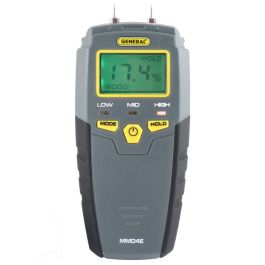After following this forum on and off for several years I finally decided to join. I appreciate all the great advise and knowledge available here on Hearth.com. So thanks to the moderators and everyone past and present who continue to contribute.
I may be new to the forum but have burned wood most of my life. We bought a home in northern Michigan about six years ago which had a Yukon/Husky wood/fuel oil furnace in the basement for the main source of heat. I quickly realized it was not set up perfectly, but the past owners used it for around 30 some years and I just kind of dealt with it. Not knocking the Yukon, but the chimney setup was not the best for our little house and creosote buildup was always a problem. Due to my wood not being perfectly dry this fall, and my neglect to clean it one month as I usually did, we had a chimney fire just before Christmas. Luckily, most of the damage was contained to the chimney. The liner was cracked and to shorten this up, it was time for a change. I like the fact that I only used $300 in fuel oil in three years with the Yukon, so I wanted to do something similar. We also have wooded acreage so the cost of firewood is low and I enjoy the exercise.
So the new upgrade is going to be a Pacific Energy Neo 2.5 in our main level fireplace. Part of me did not want a flush mount burner but I trust our chimney sweep and he felt is was a better choice for our setup. I intend for that to be our main source of heat, and for backup we are getting a propane furnace piped in to where the Yukon sat in the basement. I have already purchased a moisture meter and will be checking out the forum here for wood storage ideas to keep everything down in the 10% range. That is something I didn't do with the Yukon. I admit I am not an expert. I am open to any thoughts or advise from those using this or similar inserts. I see some people have had trouble with the glass smoking up on one side with this model. I hope this is not an issue and plan to ask some questions about it. The stove sounds really nice and a perfect fit for our 1400 sq ft home. I will post how it's going when the install is finished.
I may be new to the forum but have burned wood most of my life. We bought a home in northern Michigan about six years ago which had a Yukon/Husky wood/fuel oil furnace in the basement for the main source of heat. I quickly realized it was not set up perfectly, but the past owners used it for around 30 some years and I just kind of dealt with it. Not knocking the Yukon, but the chimney setup was not the best for our little house and creosote buildup was always a problem. Due to my wood not being perfectly dry this fall, and my neglect to clean it one month as I usually did, we had a chimney fire just before Christmas. Luckily, most of the damage was contained to the chimney. The liner was cracked and to shorten this up, it was time for a change. I like the fact that I only used $300 in fuel oil in three years with the Yukon, so I wanted to do something similar. We also have wooded acreage so the cost of firewood is low and I enjoy the exercise.
So the new upgrade is going to be a Pacific Energy Neo 2.5 in our main level fireplace. Part of me did not want a flush mount burner but I trust our chimney sweep and he felt is was a better choice for our setup. I intend for that to be our main source of heat, and for backup we are getting a propane furnace piped in to where the Yukon sat in the basement. I have already purchased a moisture meter and will be checking out the forum here for wood storage ideas to keep everything down in the 10% range. That is something I didn't do with the Yukon. I admit I am not an expert. I am open to any thoughts or advise from those using this or similar inserts. I see some people have had trouble with the glass smoking up on one side with this model. I hope this is not an issue and plan to ask some questions about it. The stove sounds really nice and a perfect fit for our 1400 sq ft home. I will post how it's going when the install is finished.


![[Hearth.com] Pacific Energy Neo 2.5 to replace Yukon/Husky [Hearth.com] Pacific Energy Neo 2.5 to replace Yukon/Husky](https://www.hearth.com/talk/data/attachments/293/293420-abd5e23b0ccc45e60ebb3783464bb384.jpg?hash=2-AjRLd9dD)
![[Hearth.com] Pacific Energy Neo 2.5 to replace Yukon/Husky [Hearth.com] Pacific Energy Neo 2.5 to replace Yukon/Husky](https://www.hearth.com/talk/data/attachments/293/293422-9795e49c697883f77edcea02a36fd00f.jpg?hash=2i4mcGncXl)

